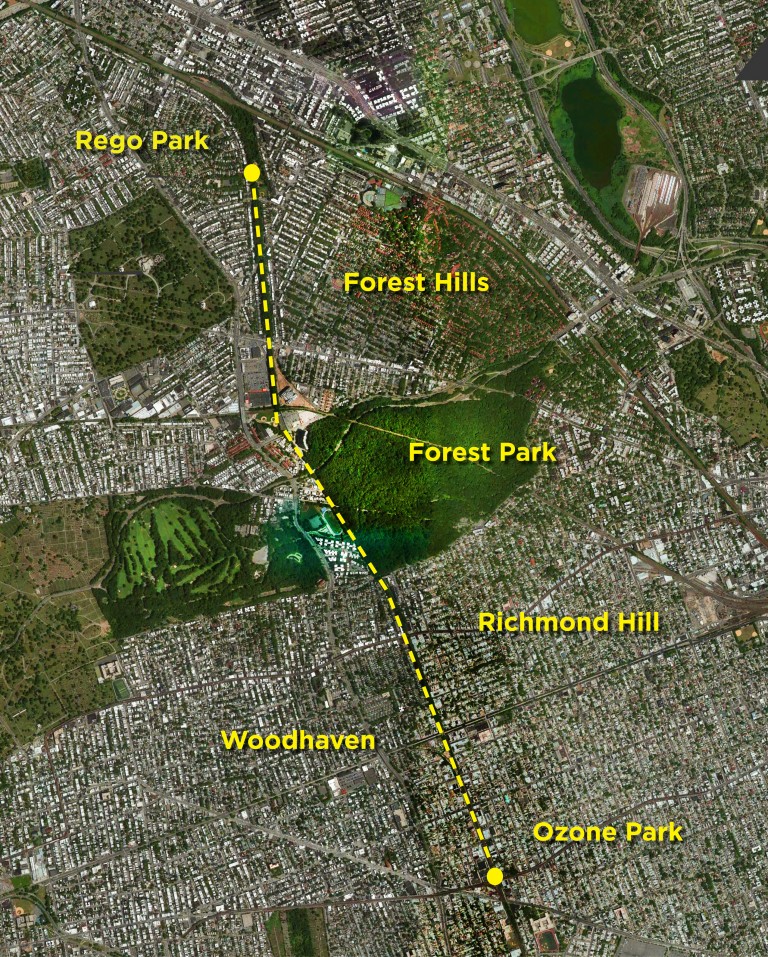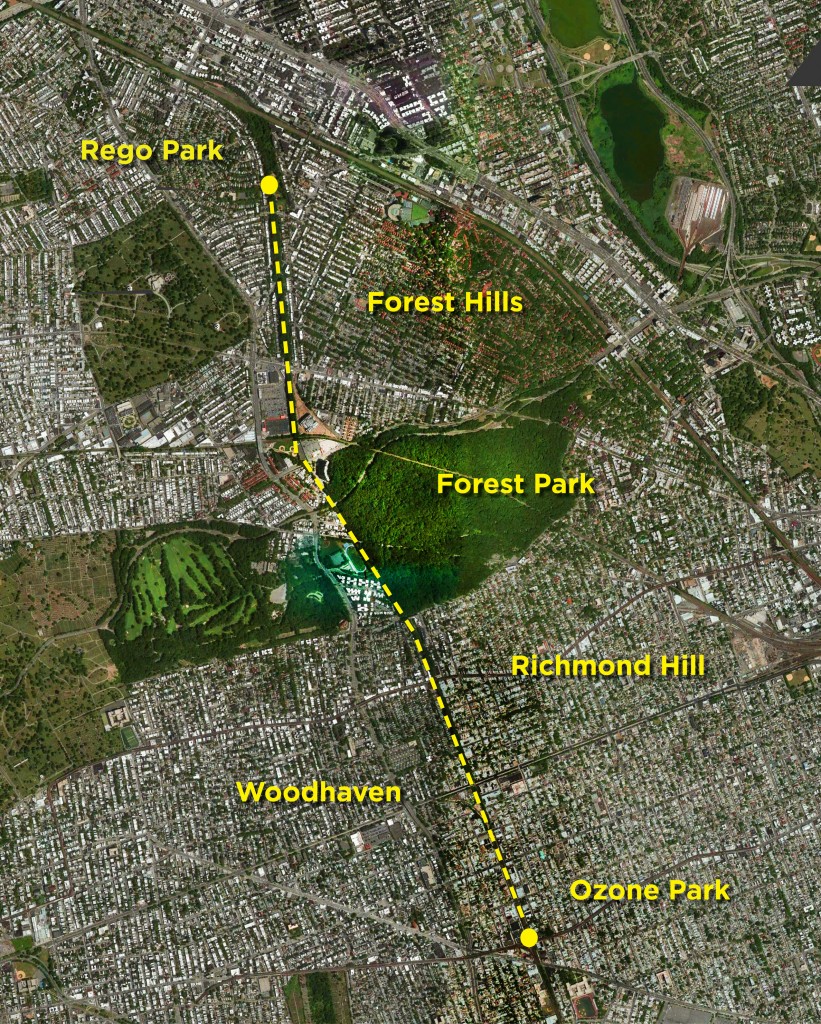Supporters of the QueensWay – a proposed park along 3.5 miles of abandoned railroad that runs from Ozone Park to Rego Park – moved one step closer to seeing their green space created this week with the announcement that two New York firms have been chosen to conduct a year-long study on how to turn the area now overgrown with weeds and scarred by litter into a spot some are calling the borough’s High Line.
Friends of the QueensWay and the Trust for Public Land announced in Forest Hills on Tuesday that the firms WXY Architecture + urban design and dlandstudio were to lead a design and feasibility plan for the QueensWay. The two groups were selected from 29 submissions hailing from around the globe, including China.
“The QueensWay is going to be New York’s next great park,” said Marc Matsil, The Trust for Public Land’s New York state director. “Our mission is to protect land for people, and this is a perfect fit with that goal.”
Claire Weisz, principal of WXY architecture + urban design, called the study “an important next step in making the vision of reclaiming the QueensWay as a green connector and cultural corridor a reality.”
The proposal for the park is not welcomed by everyone in the borough, and a number of legislators, including Assemblyman Phil Goldfeder (D-Rockaway Park) and U.S. Rep. Hakeem Jeffries (D-Queens, Brooklyn), are calling for the former Long Island Rail Road line, that, decades ago, ran from the Rockaways to Rego Park, to be reactivated.
“There are over 2.3 million local residents in Queens who would greatly benefit from a complete restoration of the Rockaway Beach Rail Line,” Goldfeder said. “I am confident that any objective study regarding the best use for the abandoned rail line will conclude that a transportation option is the only real choice. The current lack of public transit options in Queens is strangling our businesses and hurting our families, and I will continue to work with my colleagues and the governor to completely restore the abandoned rail line.”
The line, which, in addition to Rockaway and Rego Park, traveled through Forest Hills, Middle Village, Woodhaven, Ozone Park, and Howard Beach, was once owned and operated by the LIRR but was sold to the city in 1962. The city abandoned it, and, over the past five decades, the line has fallen into disrepair, its tracks covered by unruly weeds and graffiti.
Both supporters of the QueensWay and reactivating the line have said their respective proposals would benefit residents throughout the borough. Park proponents often cite there being about 250,000 in the area immediately surrounding the 3.5-mile line who would benefit from the green space, while those who want the line reactivated have said it would bring crucial economic development to South Queens and the Rockaways – areas that are underserved by mass transportation.
A number of area civic leaders are backing the QueensWay, including Queens Chamber of Commerce Executive Director Jack Friedman and Community Board 9 member Andrea Crawford. Friedman said the green space would “provide a much-needed boost to the Queens economy and its diverse local businesses,” and Crawford said residents are “excited by the beginning of the envisioning of the QueensWay.
“We have been looking forward to this moment for many years,” Crawford said.
But Rockaway Park resident Philip McManus, who recently founded the Queens Public Transit Committee to fight for, among other things, the reactivation of the Rockaway railroad, disagreed, saying the revival of the line would bring much-needed dollars to the borough.
“It would improve Queens’ cross-town transit and reduce travel times,” McManus said in a previous interview. “The RBL would increase business, employment, economic development, property values, tax revenues and educational opportunities for all of Queens.”
The study announced on Tuesday will be paid for from a $467,000 grant from the state’s Office of Parks, Recreation and Historic Preservation, in cooperation with Gov. Cuomo’s Regional Economic Development Council. Another $140,000 will come from the city Department of Environmental Preservation and private donors.
By Anna Gustafson


